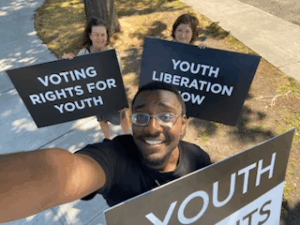According to the most recent issue, it seems ASFAR‘s ‘zine, Youth Truth is ceasing publication. After eight years it is sad to see it go, but truth be told, Youth Truth has been on life support for at least half of that time. It had become a one person endeavor (and it showed) filled mostly with news links. Even so, the publication quality was always impressively high and it was nice to see a solid youth rights publication (regardless of content) in print. NYRA has the full archive in print at our office and accessible online at the Youth Rights Network. Susan’s reasons for giving it up after all this time:
Its circulation is minuscule, its cost is prohibitive (for ASFAR’s budget anyway), its contributors have dwindled, and its editor is burned out.
The exact problems I identified six years ago and sought to solve with my suggestion that Youth Truth become a joint project for the movement as a whole and benefit from NYRA’s involvement, membership and support. An arrangement that most certainly would have saved the publication and made it far more relevant. ASFAR was stubborn however and decided not to take the offer and not to make any real changes to YT until the $2,000 a year price-tag (as of 2002 at least) became too much to bear. It is a shame.
But I’m not writing this to say “I told you so” or kick someone when they are down. I just think it is appropriate to mark the end of a publication that has been formative for the few hard core youth rights supporters who have read it and subscribed over the last eight years or so.
I also think some of Susan’s final words were worth noting and worth drawing attention to:
The realization that this is the last issue of Youth Truth, at least for awhile, has made me think about how to sum it all up for our readers, our supporters, our opponents, and the American public at large.
I keep thinking of a comedy sketch I remember from an early Saturday Night Live episode — I think it was performed by Gilda Radner, Lorraine Newman, and John Belushi. It took place in a medieval times, in a doctor’s consulting room that doubled as a barbershop, where a worried mother brought her ailing daughter for treatment. After reciting some mumbo-jumbo about the patient’s imbalance of bodily “humors,” the doctor prescribed the only treatment he knows: bleeding. As the girl’s condition declined throughout the skit, the doctor kept up the treatment. If she’s still sick, she must need more bleeding – what other answer could there be? After the inevitable outcome, at the end of the skit, the medieval doctor remained convinced he’d done all he could for the poor girl, and the mother dutifully paid the bill.
It’s human nature. We develop certain beliefs or ways of behaving in life and cling to them because they are all we know. We ignore evidence that contradicts what we think we know, and keep using the same techniques to solve all our problems, in all situations. When disastrous consequences ensue, instead of re-examining our old assumptions, we tend to conclude that we just didn’t use the same old strategies soon enough, or strongly enough… because to admit that there might be another, better way, we’d have to admit that we might have been doing the wrong thing all along.
With a few brief respites, we as a society have been pursuing the same ways of dealing with children for over a century now: tightening restrictions, punishing, demanding ever more conformity and obedience, infantilizing adolescents and even young adults.
And year after year, decade after decade, generation after generation, we still hear the same old complaints. Kids don’t appreciation, they don’t behave, they don’t learn. They spend too much time on frivolous pursuits. They have no work ethic, no respect. They don’t understand the value of a dollar. They’re impulsive. They don’t understand risk. They don’t look ahead to the future.
And year after year, decade after decade, generation after generation, adult society responds with more of the same.
Out adult population has all grown up in captivity; it is all they know. The cage in which we expect children to remain becomes even smaller, as we heap ever-harsher punishments onto their feeblest attempts to escape. Are we doomed to a never-ending battle between the desire of adults to control and the need of youth for freedom and self-determination?
Must we bleed the “patient” to death before we stop?





